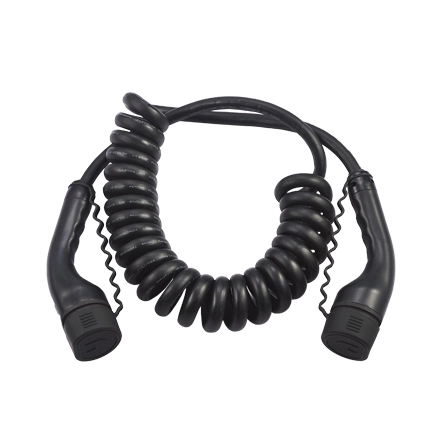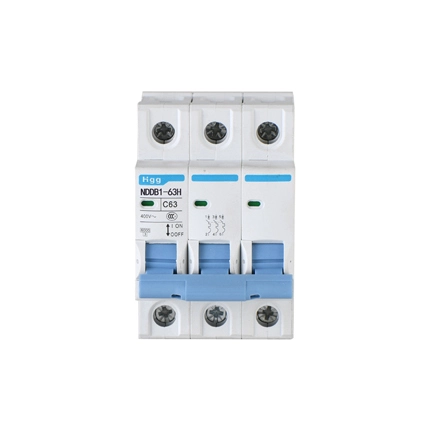In modern electrical installations, ensuring both safety and efficiency starts with choosing the right control and protection devices. Among the most common yet often confused components are the DP (Double Pole) switch and the MCB (Miniature Circuit Breaker). While they may be found together in distribution boards or switch panels, their functions, mechanisms, and roles within a circuit are significantly different.
This article aims to provide a comprehensive and professional comparison between these two devices, shedding light on their working principles, use cases, and how they complement each other in electrical systems.
What Is a DP Switch?
A Double Pole (DP) switch is a type of electrical switch designed to isolate both the live and neutral wires in a circuit simultaneously. This dual-line disconnection provides complete power isolation, which is particularly important when performing maintenance or servicing connected equipment.
Unlike protective devices that react to faults, a DP switch is manually operated. It doesn’t detect or respond to overloads or short circuits. Instead, it gives the user full control over when and how the power supply is cut off. This makes it especially useful in systems where manual shut-off is required for safety purposes.
In residential setups, DP switches are often used with high-power appliances like water heaters, ovens, and air conditioning units. In industrial environments, they may be used to isolate entire machines or systems for repair or inspection.
What Is an MCB?
An MCB (Miniature Circuit Breaker), on the other hand, is an automatically operated protective device. Its primary role is to monitor the electrical current flowing through a circuit and to interrupt that flow when it detects a fault condition, such as an overload or a short circuit.
Internally, an MCB uses thermal and magnetic mechanisms to detect excessive current. When such a condition arises, the breaker trips automatically, cutting off power to prevent damage to equipment or wiring, and more importantly, to minimize fire risk or electrical shock hazards.
MCBs are widely used in all types of electrical systems—from residential homes and commercial buildings to industrial setups. They are the go-to solution for protecting lighting circuits, socket outlets, appliances, and more.
Functional Differences Between DP Switch and MCB
Although both DP switches and MCBs are installed in distribution boards or switch panels, they serve distinctly different purposes. The DP switch is essentially a manual isolator, while the MCB is a protective device that operates automatically.
The DP switch provides a secure way to manually disconnect both the phase and neutral wires. This total disconnection ensures that no current flows to the appliance or section of the circuit, which is crucial for safe maintenance. However, it does not respond to electrical faults. If an overload or short circuit occurs, the DP switch remains unaffected unless manually turned off.
In contrast, the MCB is designed to detect faults and protect the circuit by tripping when the current exceeds safe limits. Once tripped, the MCB can be manually reset, but until then, it prevents current from flowing. This automated response makes it essential for protecting wiring and connected equipment from damage.
Practical Use Cases and How They Complement Each Other
While each device serves a unique role, they are often used together to provide comprehensive safety and control. For example, in a domestic setting where a water heater is installed, a DP switch may be mounted near the appliance to allow the user to manually disconnect power before cleaning or servicing. At the same time, an MCB in the main distribution board will protect that circuit by automatically tripping in case of overload.
Similarly, in industrial environments, machines are often equipped with DP switches for safe isolation and MCBs for ongoing protection during operation. This combination ensures that technicians can safely work on systems without fear of electric shock while also keeping the system protected from electrical faults.
Operation and Design Considerations
The mechanism of operation is a major distinction. A DP switch is purely mechanical and relies on user input, typically through a toggle or rocker. It is not intelligent in any way and does not provide feedback or fault indication. Its main role is isolation, not protection.
The MCB, however, is both a sensor and a controller. It senses fault conditions through its internal components—thermal elements for overloads and magnetic coils for short circuits—and then automatically acts to open the circuit. Some advanced MCBs even include trip indication or integrate with monitoring systems in smart buildings.
From a design standpoint, DP switches are often rated by current (e.g., 16A, 32A) and voltage (e.g., 240V) for specific load disconnection. MCBs, in contrast, are categorized by both current rating and trip characteristics (Type B, C, or D), depending on how quickly they respond to different levels of fault current.
Safety and Regulatory Standards
Both devices must comply with international and national safety standards to ensure reliable operation. DP switches are typically governed by standards like IEC 60947-3, which outlines specifications for isolating devices. MCBs are generally covered by IEC 60898 for domestic use and IEC 60947-2 for industrial and commercial applications.
Proper selection, installation, and maintenance of these devices are essential. Improper use—such as relying solely on a DP switch for fault protection, or installing an MCB without an accessible isolator—can lead to safety hazards and potential code violations.
| Feature | DP Switch (Double Pole Switch) | MCB (Miniature Circuit Breaker) |
| Function | Manual isolation of live and neutral lines | Automatic protection against overloads and short circuits |
| Operation | Operated manually by user | Operates automatically when a fault is detected |
| Main Purpose | To isolate a device or circuit for maintenance/safety | To protect electrical circuits from damage |
| Response to Faults | Does not trip or detect faults | Trips automatically in case of overload or short circuit |
| Disconnection | Disconnects both phase and neutral wires | Usually disconnects only the phase wire |
| Safety Role | Provides complete disconnection for safe servicing | Prevents overheating and fire risks due to overcurrent |
| Reset Method | Must be switched manually | Can be manually reset after automatic trip |
| Common Usage | High-load appliances (e.g., AC, water heaters) | Lighting, outlets, general circuit protection |
| Installation Location | Near the appliance or equipment | In the distribution board/panel |
| Standards | IEC 60947-3 | IEC 60898 (domestic), IEC 60947-2 (industrial) |
| Cost | Generally lower | Typically higher due to protective functionality |
| Indication of Faults | No indication | May show tripped status |
Conclusion
To summarize, the DP switch and MCB are both vital components in any well-designed electrical system, but they serve very different roles. A DP switch provides a safe and manual way to isolate both phase and neutral, ensuring that circuits are completely dead before any work begins. An MCB provides automated protection against overcurrents and faults, reducing the risk of damage and ensuring operational continuity.
Using both together provides a layered approach to safety and reliability. The DP switch gives you manual control, while the MCB offers automated protection. Whether you're an electrical engineer, technician, contractor, or a homeowner overseeing a renovation project, understanding these differences can help you make smarter, safer decisions when it comes to your electrical setup.





